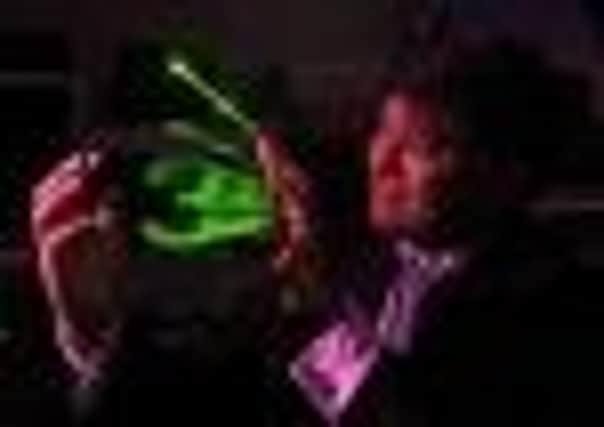The 3D force may be with Holoxica


Holoxica, a business spun out of the University of Edinburgh, has unveiled a moving 3D holographic display where images are suspended in mid-air. It says the technology could soon be used for clocks, dials and even adverts and “floating” signs.
The company is so far best known for producing complex 3D images used for scientific applications such as visualisation in biomedical research. This latest device produces 3D animation by interweaving a number of different holograms.
Advertisement
Hide AdAdvertisement
Hide AdManaging director Javid Khan likened the technology’s current stage to the first LCD displays in the 1980s, which led to much more complex screens.
“The holographic screen currently embeds up to nine images but this number can be scaled up,” he said. “Indeed, we can scale up towards 25 images, where it is possible to get a second of full 3D video or make other kinds of animated characters.”
He said the Star Wars film sparked interest in creating a moving hologram 30 years ago but a generation of scientists found the technology impossible to produce in “science fact”. Holoxica’s approach has been more pragmatic, using existing technology and materials to make a simpler moving image. That also means the firm would not need to invest in expensive manufacturing capabilities to produce its displays commercially.
Khan says the popularity of 3D cinema – achieved by an optical illusion – has sparked more interest in “true” 3D, the market for which is growing by more than 30 per cent a year and is worth about £500 million globally.
Backed by private investors and Scottish Enterprise, Holoxica has sunk about £250,000 into the research so far. It is now seeking investment of about £1m to take the technology to the next stage.